With great appreciation to Robb Watt, a Schreckengost relative for this monograph....one of the most extensive and complete of its kind related to the "Kentucky Rifle Gunsmiths. The Museum Committee is proud to be able to debut it on the ALR website.
William G. Shreckengost
(
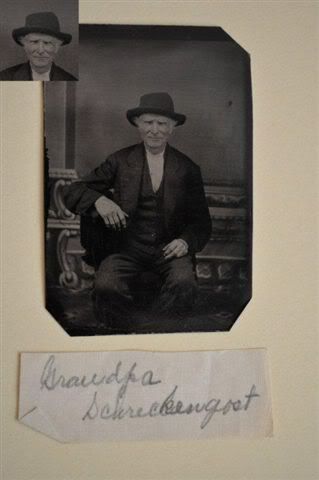
)
William G. Shreckengost was born in Dauphin County, PA in 1818, though some accounts say he lived in Armstrong County all his life. He died 9-11-1894 in Armstrong County. His father John Shreckengost was born June 29, 1776 in Washington Twp, Northumberland County, PA during the war of the rebellion. According to the Beers History of Armstrong County, John, Heinrich (Johnís father) and Conrad (Johnís uncle) moved by wagon train along the Great Shamokin Path from Penn's Spread Eagle Manor, near Rebuck, Northumberland County (then Berks Cty) to Armstrong County in 1804. Interestingly, the area settled by the Schreckengosts is still known as West Shamokin. Wmís middle initial G is likely from his motherís last name Greninger or his other uncle George who remained in Eastern PA. Wmís grandfather Heinrich had immigrated to the US aboard the ship Polly from Rotterdam in 1764 along with Heinrichís father Johann Jost Schreckengost Jr. nicknamed Yock and Heinrichís brother Conrad. George had been indentured to a blacksmith for 7 years to pay for the familyís passage to America. The Schreckengost pioneers were well known hunters and organized large scale circular wolf hunts to rid the PA forest of wolves. The story goes that Yock had to flee from Germany because he was going to be arrested for hunting on the kings lands. Itís said that the Schreckengosts were fiercely
independent people who wanted to be left to their own devices. This likely is the reason that
Yock was willing to serve in the Northumberland Militia only a few short years after coming to American for his freedom.
Census and land ownership records of Armstrong Cty show Heinrich (known as Henry), Conrad and John located there in 1810 leading me to think that the wives stayed behind with the children in Dauphin until the men got themselves established in Armstrong Cty. Western PA at the time was a harsh and dangerous territory with much hardship. At some point in Williamís young life he settled in Putneyville, Armstrong County, PA .Putneyville is and was a very small town along Mahoning Creek that was established around the lumber industry at the beginning of the 1800s. The lumberman would cut the trees and float them down the Mahoning to the Allegheny River, then south to Pittsburgh. Wmís 16í by 20í wood frame shop sat about 40 feet from the stream, which would have been needed for water to quench the hot steel. The shop had benches on each side of the shop under wide windows which would have provided good natural light for his work. The shop shown here

stands and is now used as a garden shed by the current owner who knows of itís past use. It has been moved back from the stream about 100 feet from itís original placement. This picture shows the original hitching post where Williamís customers tied their horses.
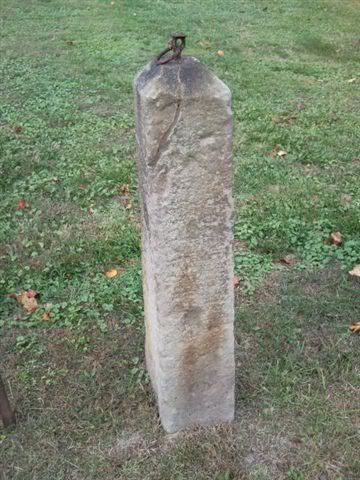
Here is an image of an 1860 census of Putneyville listing
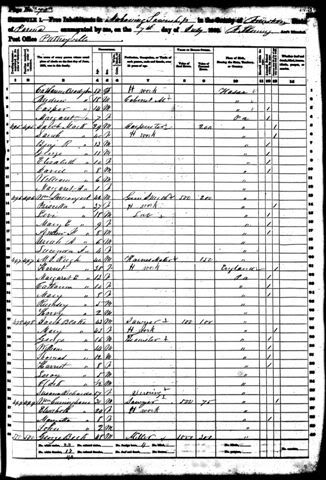
William Shreckengost as gunsmith and an image of Putneyville showing the location of his property

From birth, Wm was destined to be a gunsmith and follow in the family tradition. His
great grandfather Johan Yost (Yock) Schreckengost had served with Capt John Moll in the Northumberland Militia in defense of Fort Augusta. From a young age, he likely witnessed his family engaged in their craft. Though I've seen no gun signed or attributed to the generations before William, their census records and local histories all state they were gunsmiths. Gunsmiths of Western Pennsylvania Volume 1 by James Whisker and Thomas Metzgar shows the following Schreckengost gunsmiths, John, William, Lincoln, Levi, Peter, Conrad, Benjamin, Daniel and Michael along with many examples of their work.
Not much is known of William's early years, it is likely he apprenticed gunsmithing in his early
adulthood. Accounts state that he apprenticed under Nicholas Shennefelt which would be likely,
due to his proximity and style. A Shennefelt gun is shown here.
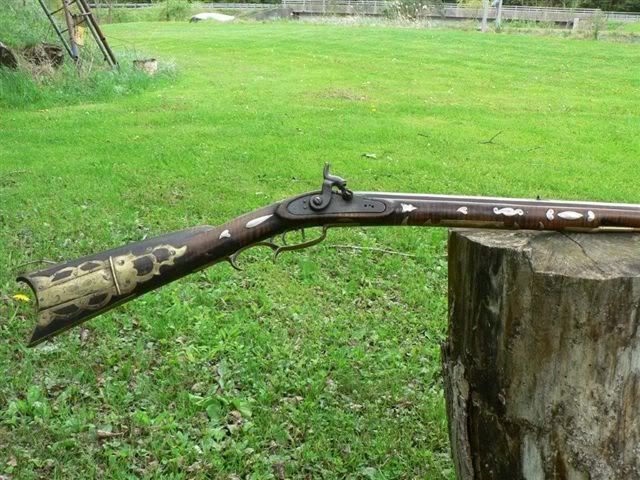
Nicholas Shenefelt is shown in the 1787 Northumberland County census along with Heinrich, John and Conrad Schreckengost. Nicholas then moved to Clarion Cty PA, very near Putneyville where William's gunsmith shop was later located.
A known gun shown here
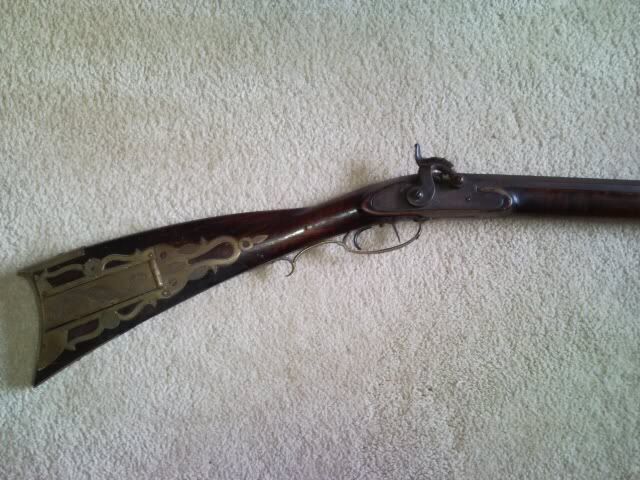
with a National Roads patchbox is thought to be among William's earliest work. A National Roads patchbox template is among William's templates in the hands of a collector. The collection of templates
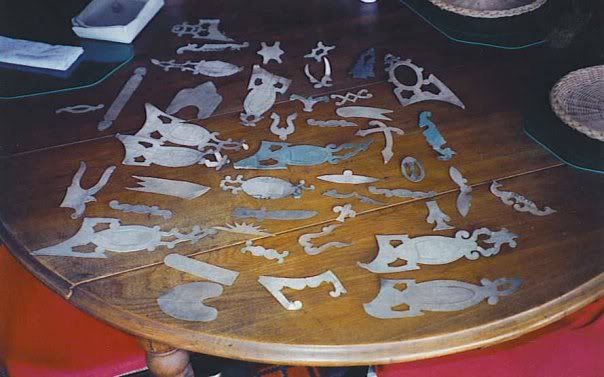
and tools is astonishingly complete

(A most extensive, perhaps complete set of tools, is exhibited in the forum entitled: "
Tools of a Gunsmith" at this URL:https://americanlongrifles.org/forum/index.php?topic=12919.0and gives a fantastic records of how these guns were produced. The National Roads patchbox gun shows evidence of his early engraving talent, but is not as intricately engraved as his later
work. That early signed gun, has the same engraving around the sights and sideplate as his later guns, but the patchbox and buttplate are very different. Specifically, all Wm Shreckengost guns that Iíve seen have four small round circles
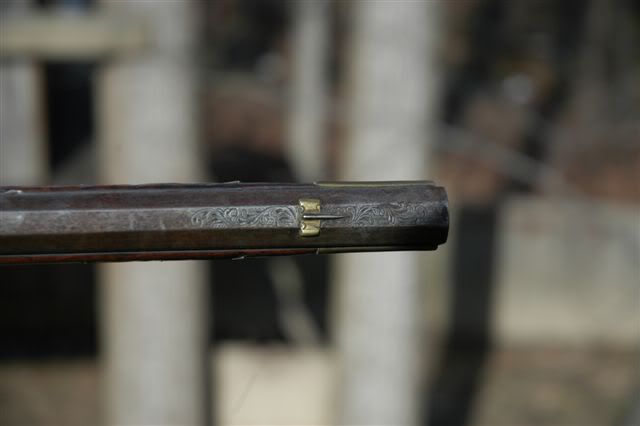
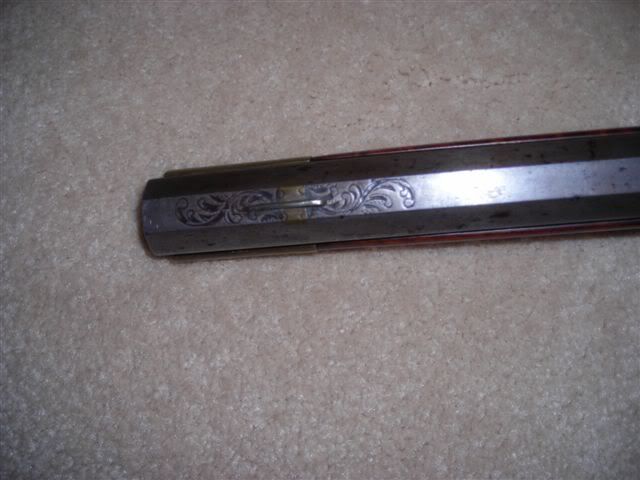
punched across the steel and into the brass of the front sight locking in the brass sight to the barrel.
The vast majority of Williamís guns are very distinctive in their design, His patchboxes were his most distinctive feature.
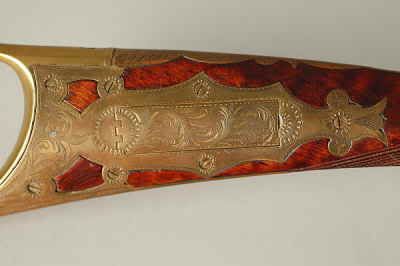
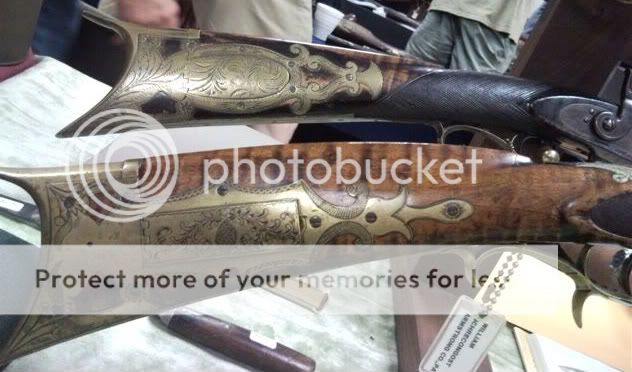
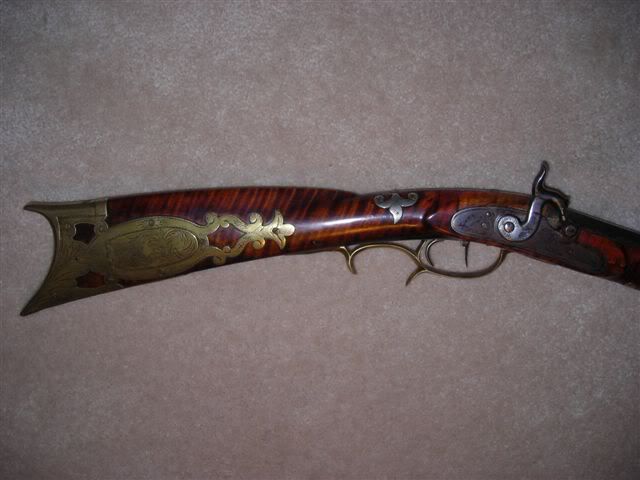
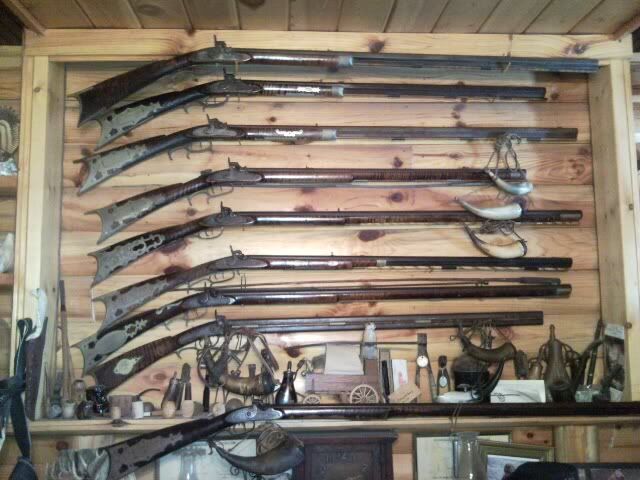
With the exception of the National Roads Patchbox all are hinged on the end toward the butt plate with oval or rectangular boxes inside ornate pierced designs. This is contrary to what the vast majority of gunsmiths were doing at the time. The stock has a larger drop than most other rifles of the era and was designed to be rested in the elbow joint of your arm per some of his descendants. All examples have the Roman Nose stock and raised cheek rest like the Bedford style rifles. Each butt plate was individually sized for the buyer of the gun. Most of his guns have a brass wear plate under the forearm. Most also have German silver inlays, unique and easily identifiable in the Schreckengost style, on the cheek side of the stock along with ornate sideplates.
William was known to purchase his locks and barrels from suppliers in Pittsburgh, PA, among them Whitmore, Wolf, Duff & Co.
It is plausible that John Duff, an early settler of Putneyville and iron merchant in Lawsonham nearby had moved to Pittsburgh and continued his relationship with the Shreckengosts selling them locks. Anthony Bonnet, another local gunmaker had worked for Duff in his iron ore mine.
Bonnet later became an apprentice of Nicholas Shennefelt and opened his own shop in Clarion
PA. One rifle has a George Golcher lock, relationship unknown.
Wm took the smooth barrels and bored them with a rifling bench
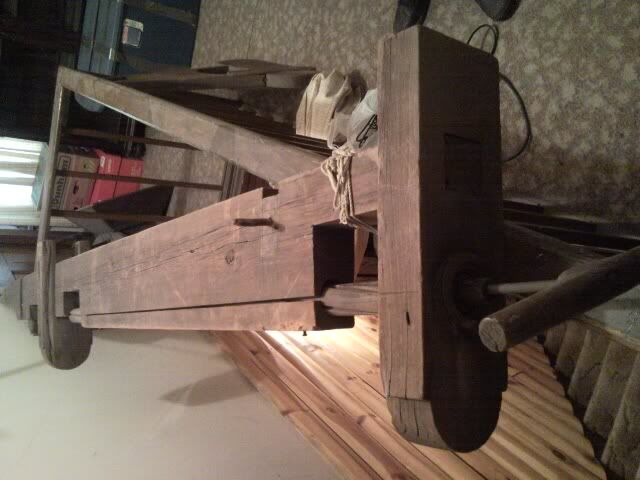
that had a progressive twist. I was told by a descendant the owns the original rifling bench, who is also a gunsmith, that in order to rifle a barrel, the gunsmith would have to walk back and forth the equivalent of 3 miles to cut the grooves in the barrel with these old rifling benches. It is said that he had 3 rifling benchs and one bench, shown above, is still in the hands of a Shreckengost family member.
Family accounts say that each gun was made to order. An additional charge of .25c or so, depending on size, was charged for each inlay, and the more engraving that was done on a gun, the greater the cost.
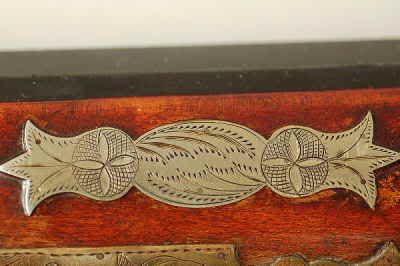
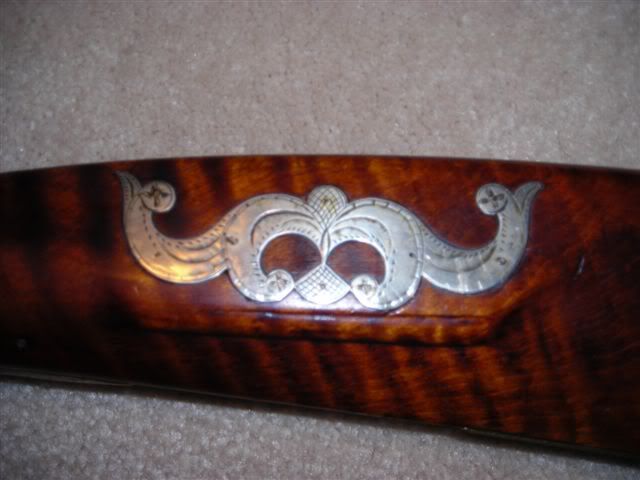

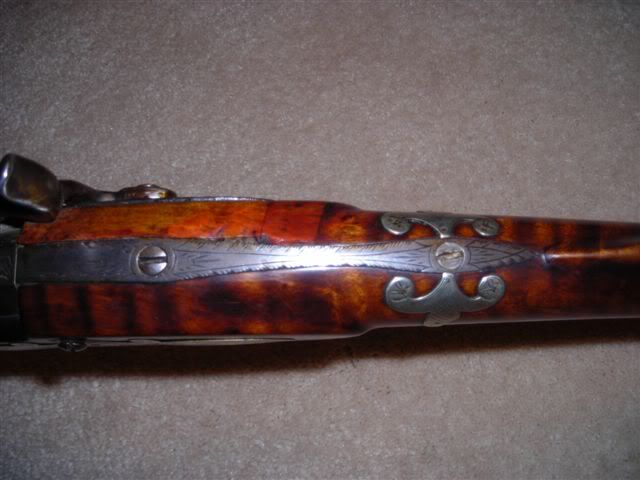
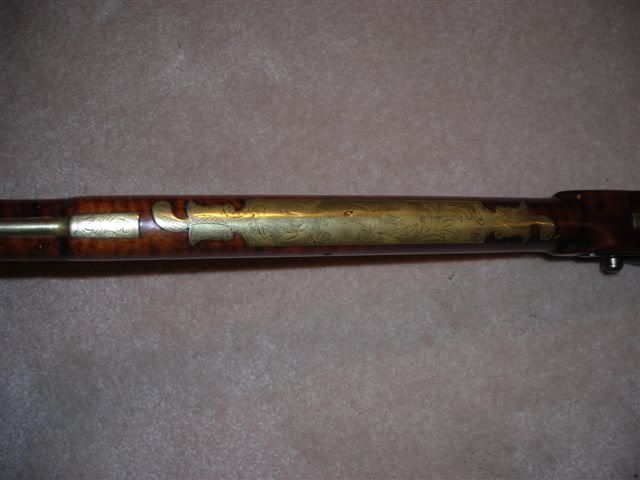
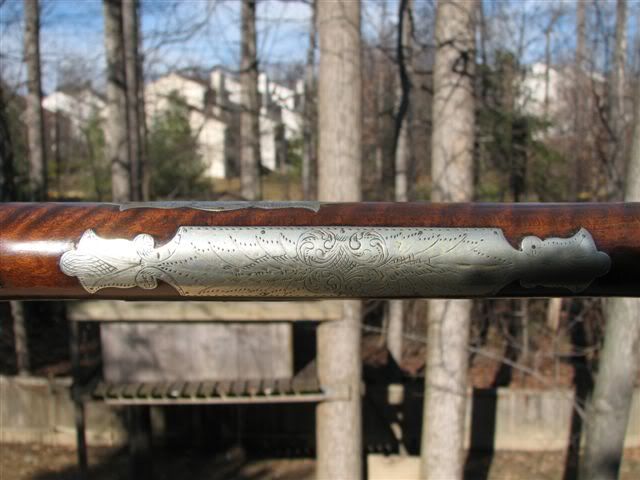
I've seen examples with no engraving and examples where every piece of metal is covered with engraving.
The gun shown here, purchased for $34 in 1882 by William Anderson had no engraving, but still had beautiful inlays. A photo of that gun being held by William Andersonís son Clover taken in 1892 shows family life in that era. Note the pet chicken.
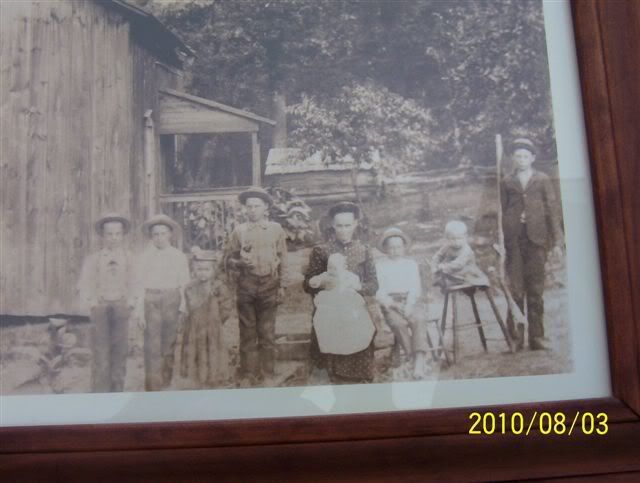
William was known to design many different types of guns. Double barrel rifles, rifle fowler combinations, full stock, half stock, petite guns, backlocks, bench guns, target models, pistols and 4 swivel barrels are known to exist.

All of the guns made by Wm were carved from tiger maple and all were percussion cap ignition. The majority of his guns were made with a patent breech that was an integral part of the barrel.
Another uncommon feature of Williamís work it is presumed, was engraving the owners name on the top flat of the barrel , rather than the gunmakers name or initials.This barrel is signed
"John Mc Camen."

Here are photos of one of Williams finest guns. A Swivel breech rifle. This highly stylized and
engraved rifle exhibits all his mastery. The swivel action is tight and smooth. The engraving is
ornate, the fit and finish are skillful.
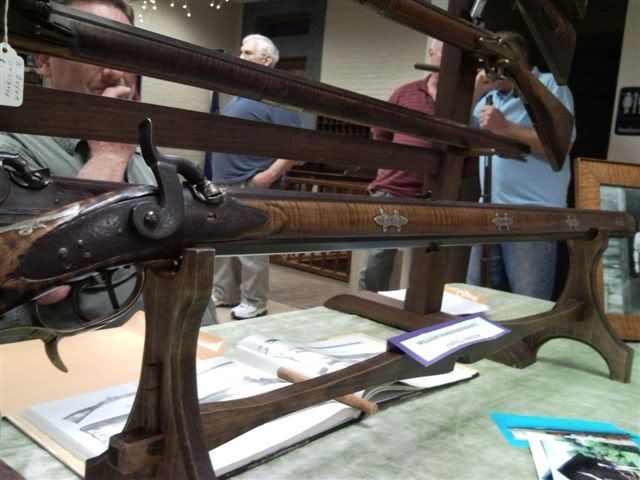
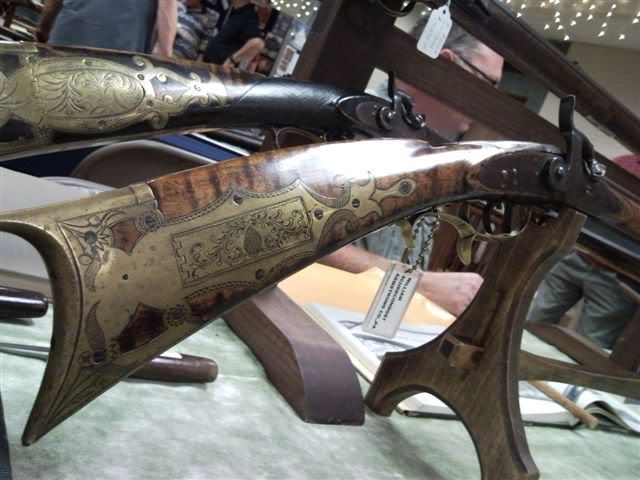
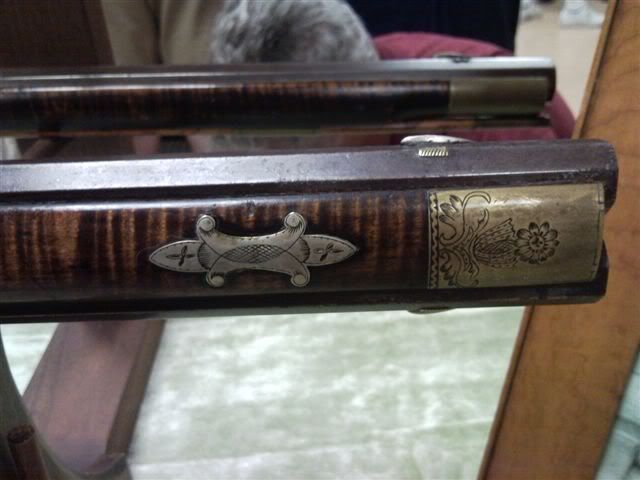
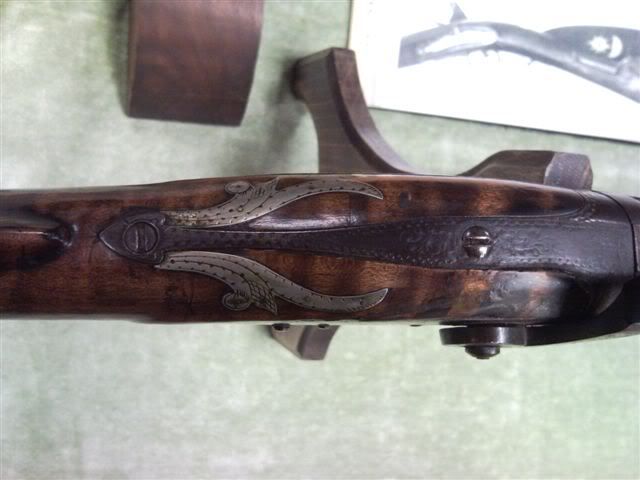
William was a prolific maker and made guns from the late 1830s until the 1880s. In Armstrong Cty many of these guns are still in the hands of family, having been passed down through the generations. 3 living Shreckengost descendants are still in the gunsmithing business.
You will now find the Shreckengost family spread out all over the USA. Williamís uncle George kept the original spelling of Schreckengast. Most eastern PA Schreckengasts are descendants of uncle George. Though the spellings have morphed over the years, nearly every Schreckengost in the USA, no matter how spelled, is a direct descendant of Johann Yost (Yock) Schrecengost.
William was married 3 times. To his first wife was born his first child Levi. Levi was wounded in the Civil War, held at Andersonville with his cousin Adam (who died there) and returned home unable to continue with the heavy labor of farming. He took to keeping bees. A photograph of his Farm/Apiary is included in this presentation.
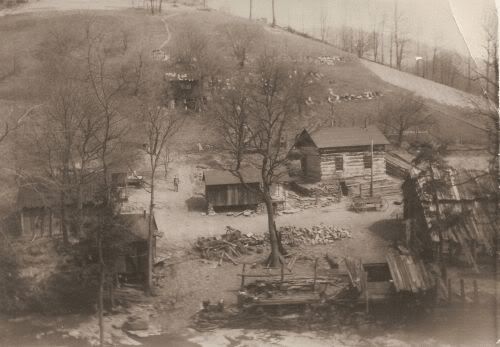
A photo of him at a Gettysburg reunion of Union soldiers is included here also.
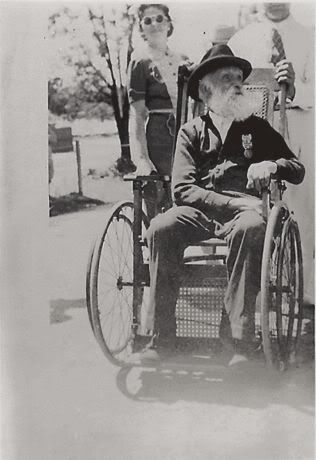
William had several more children, one named Andrew who is said to have died in Africa in his twenties. His last child was Lincoln. Lincoln became his fathers apprentice and carried on the tradition of gunsmithing.
Lincoln Schreckengost, 1865-1949
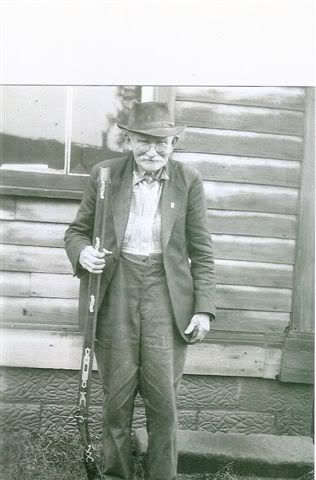
Old Lincís guns were very different from his fathers. Most had quilted maple stocks rather than tiger maple. His inlays no longer showed the German folk art designs, but rather contained images of men, animals, fish and weapons. Lincoln lived until 1949. Lincoln was also a prolific maker and many examples of his work are still around Western PA.

Lincoln also owned a general store in Putneyville for many years at the same location where his fatherís gunshop had been.
One family member recalls that one day a man came to Williamís shop to buy a gun and there were none available at the time, so Wm sold the man Lincolnís personal gun. When Lincoln returned from school he was angry about it and so his father decided he would build him a special gun to replace it. That swivel barrel gun is highly ornate, in pristine condition and still in the hands of the descendants on a direct line handed down from Lincoln to his son McKinley, then to Charles.
The Schreckengosts had many children and attached is a photograph of a 1928 Reunion
at Pleasant Unity Church in Armstrong County near Rural Valley, PA showing hundreds of
descendants.

In gunsmiths of Western Pennsylvania Volume 1, there is reference that Benjamin Schreckengost
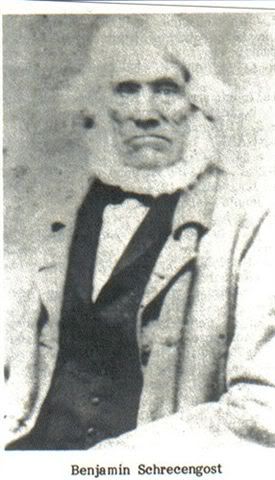
He was a known gunmaker and one signed gun of his is known to exist. Benjamin
the son of Conrad, built a grist mill named the Red Mill which stood at the intersection of the
current Red Mill Rd. and Graham Rd near Kittanning. Attached is a picture of the 1817 cornerstone of that mill shown here

and a photo of Benjamins stone house built around the same time.
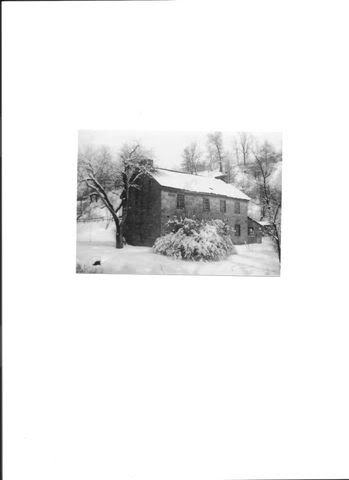
No one knows how many guns the Shreckengosts made, but the number is likely in the
hundreds. William made guns for over 40 years and it took him less than 2 weeks to produce one. I was recently told that many of their guns were shipped to the Massachusetts area.
The Heinz Regional History Museum in Pittsburgh, PA has 2 Shreckengost rifles on display. Though one is attributed to S.C. Schreckengost. I believe it was made by William as it bears
all his style.
My discovery 9 months ago that I was a descendant of Yock, Heinrich and Conrad Schrecengost has led me on an unexpected journey through history, with each new discovery leading to a desire for more knowledge about this old family of gunmakers. Their work in wood, metal, fire, chemistry and artistry is a compelling legacy from a time when pride of workmanship and survival of the family fueled long hours of painstaking craftsmanship. Theirs is truly an American immigrantís success story. It is doubtful that they would have ever thought that their work would today, 150 years later, be in the hands of their family, gun collectors and museums.
Researched and Prepared by:
Rob Watt
( A relative)

